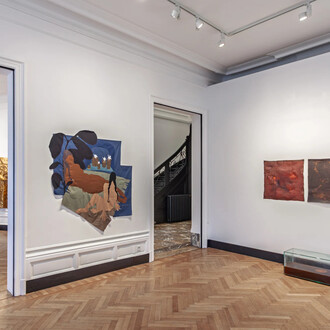Unlike the biggest European museums, which commenced at a fairly early stage in their histories to assemble relics from the pharaonic past, the Cinquantenaire Museum began only recently, relatively speaking, to put an Egyptian collection together, more particularly with the acquisition around 1850 of a small core of objects. During the second half of the nineteenth century, this was expanded for the first time by the purchase (in 1861) of the collection of G. Hagemans and the donation (in 1884) of E. de Meester de Ravenstein.
The collection’s current fame is due chiefly to Jean Capart (1877-1947), who laid the foundation of Egyptology in Belgium. A dynamic figure, he understood the art of attracting the interest of important patrons and of finding the right moment to make interesting acquisitions in the art market or at public auctions. Numerous objects come directly from excavations in Egypt and particularly at Elkab, where Capart began archaeological research in 1937.
At present, the collection numbers more than 11 000 pieces and can be termed representative of every great period of flowering in Egyptian history. Just a selection of them is displayed: items of outstanding quality, illustrating the most diverse aspects of the art of Ancient Egypt, and items that are important from mainly a cultural and historical point of view.
Among the prize pieces are the so-called ‘Lady of Brussels’ a limestone figure of a woman (ca. 2700 B.C.), a head of King Mykerinos (ca. 2500 B.C.) and a relief image of Queen Teje, the wife of Amenhotep III (ca. 1375 B.C.). Also in the collection is an entire burial chamber, the mastaba of Nefertitenaf (ca. 2400 B.C), various sarcophagi and mummies from different periods, including the so-called ‘Embroideress’ mummy, and one of the finest books of the dead that has survived from Ancient Egypt: the papyrus roll of the sculptor Neferrenpet (ca. 1300-1250 B.C.).
The Cinquantenaire Museum is world-famous not only for its Egyptian collection. Also its archaeologists and Egyptologists are very active in the field. In Elkab, in Upper Egypt, they excavated several Old Kingdom tombs and recently found an important settlement from that period. In Qurta, about 50 km southwards, they also discovered the most ancient Egyptian prehistoric rock art known. The rock drawings here, mainly of wild animals, are over 15,000 years old !
















